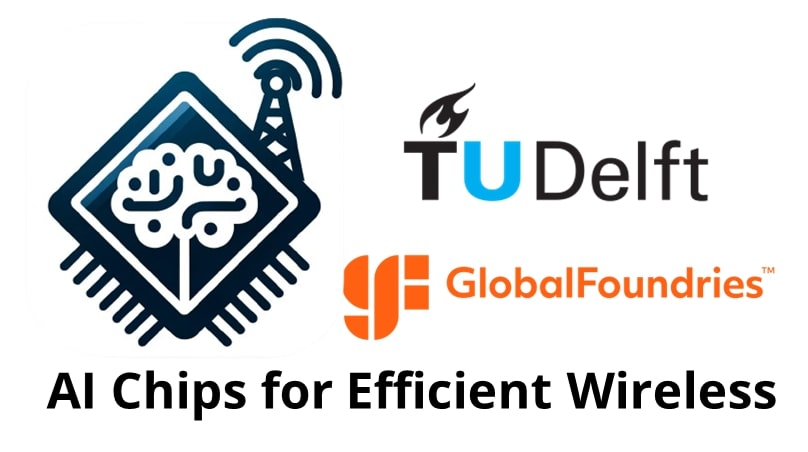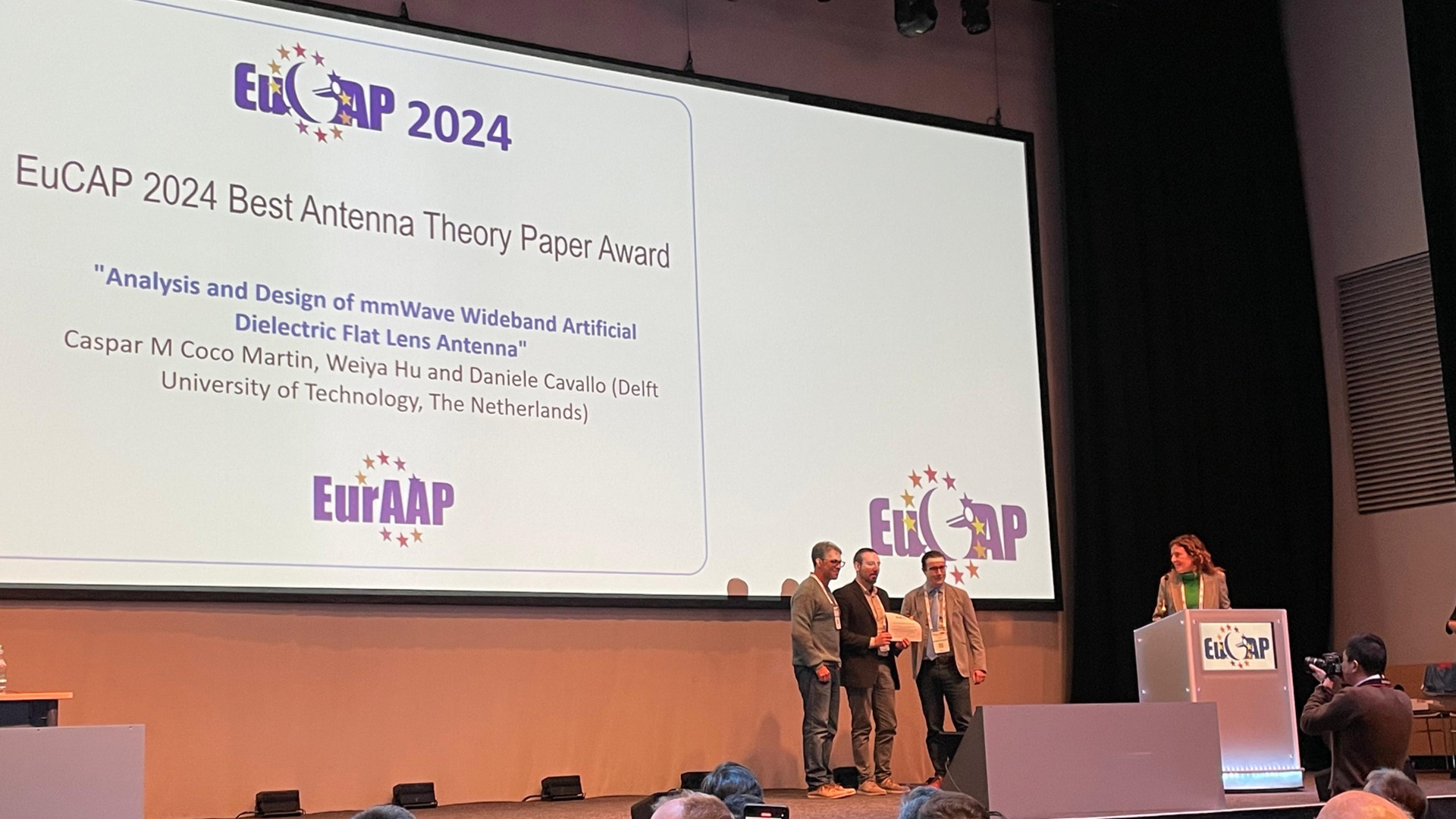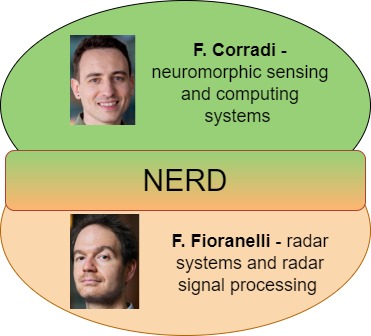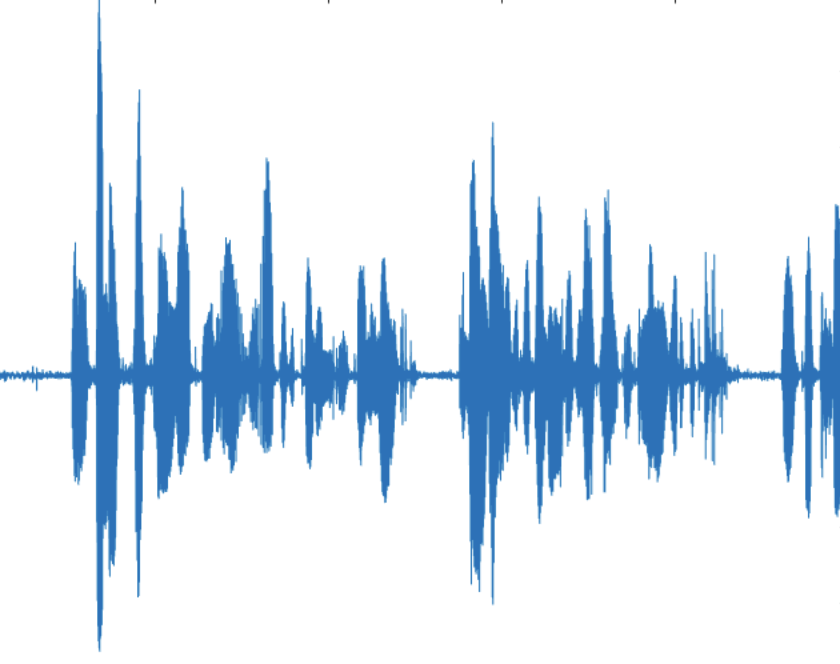News
First Microelectronics Synergy Grants
- Friday, 22 February 2019
According to Professor Geert Leus who heads the ME Research Committee, the Synergy Grants are also intended to kick-start the research of young faculty, as it can be quite challenging for them to obtain funding at the beginning of their research careers. The grants cover half the costs of a PhD candidate, with the rest coming from existing research funding. ‘The submitted proposals were carefully evaluated by the ME Research Committee on the basis of their scientific quality, their clarity and feasibility, the synergy between the participating sections, and the relationship to the departmental themes. The ME Management Team (MT) then decided to award Synergy Grants to the top three proposals.’
Changes
The aim of the grants is to encourage newly emerging combinations of technologies and to facilitate cross-overs between them, thus strengthening and broadening the department's research portfolio. This goal fits seamlessly within the research strategy of ME, which has defined itself around the four themes of Health & Wellbeing, XG, Safety & Security and Autonomous Systems to better address societal challenges.
Winners
Last week, the winners were received by the ME MT. They received flowers from the head of the department (Kofi Makinwa) and had the opportunity to briefly present their proposals to the assembled MT. Below are short descriptions of the successful proposals.
Akira Endo & Sten Vollebregt: ‘The aim of our project TANDEM: Terahertz Astronomy with Novel DiElectric Materials is to develop advanced dielectric materials to realize superconducting microstrip lines with very low losses in the frequency ranges of 2-10 GHz and 100-1000 GHz. The PhD candidate will combine the dielectric deposition, characterization, material expertise and facilities of the ECTM group and the Else Kooi Laboratory, and the submillimetre wave device measurement capability of the THz Sensing Group and SRON. The aim is not only to realize low loss dielectrics, but also to understand the underlying physics that governs these losses. If successful, these microstrips will be immediately applied to enhance the sensitivity of the DESHIMA spectrometer on the ASTE telescope in Chile.’
Bori Hunyadi: ‘On one hand, the vast complexity of the human brain (10^11 neurons and 10^14 connections) enables us to process large amounts of information in the fraction of a second. At the same time, imperfections of the wiring in this vast network cause devastating neurological and psychiatric conditions such as epilepsy or schizophrenia. Therefore, understanding brain function is one of the greatest and most important scientific challenges of our times. Brain function manifests as various physical phenomena (electrical or e.g. metabolic) at different spatial and temporal scales. Therefore, the PhD candidate working on this grant will develop a novel multimodal and multiresolution brain imaging paradigm combining EEG and a novel imaging technique, fUS. The specific engineering challenge is to understand and describe the fUS signal characteristics, deal with the large amount of data it records using efficient computational tools; and finally, formulate the specification of a dedicated non-invasive, multimodal, wearable EEG-fUS device.’
Virgilio Valente & Massimo Mastrangeli: ‘The seed money of the Synergy Grant will partially support a joint PhD candidate to investigate the tight integration of an heart-on-chip device with dedicated electronic instrumentation in the same platform. Our aim is to bring sensing and readout electronics as close as possible to a cardiac tissue cultivated within a dedicated micro physiological device. The grant helps promoting the logical convergence between current departmental research activities at ECTM and BE and within the Netherlands Organ-on-Chip Initiative (NOCI) on the development of instrumented organ-on-chip devices.’

News

GF12LP+ University Program awarded to Chang Gao

Best Paper Award at EuCAP 2024
Best Antenna Theory Paper Award for Caspar Coco Martin, Weiya Hu, and Daniele Cavallo

NWO M2 grant awarded to Francesco Fioranelli

STOI incorporated in Matlab
STOI is a widely used measure for "short-time objective intelligibility" in (compressed) speech, and was developed by members of the SPS group